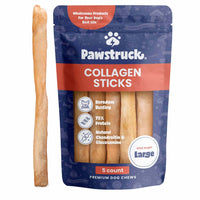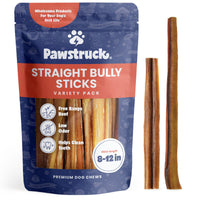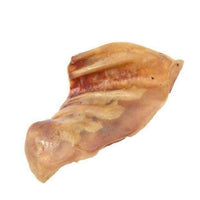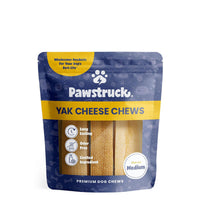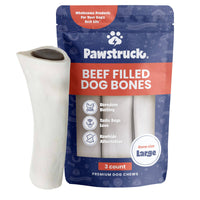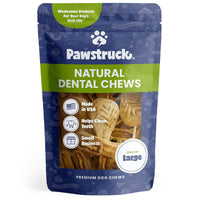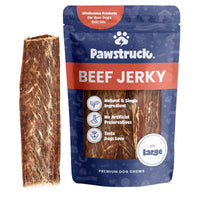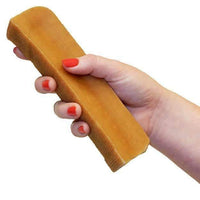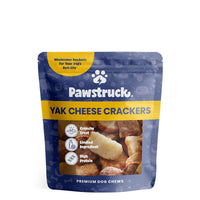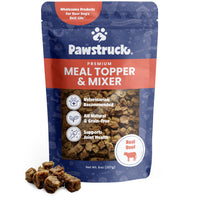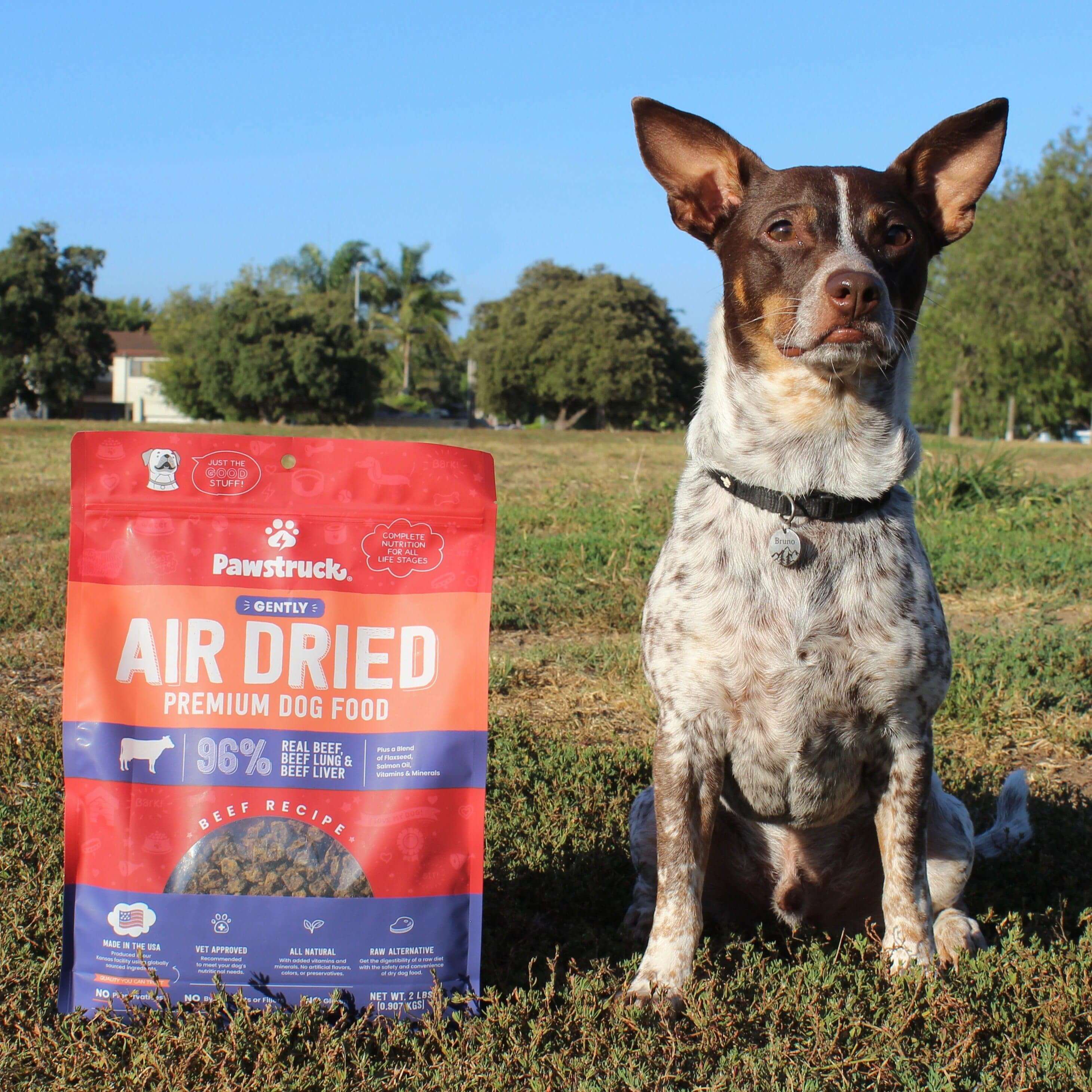Flea and Tick Prevention For Pets

Ticks and Fleas are really bothersome! These parasites can survive all year round and the infestation gets even worse during warmer months. Now that winter is almost over, your dogs can get easily infected just by playing outside or from interacting with other pets.
Can you do anything to eliminate these parasites from your home? Can your dogs get sick if you don’t look for ticks and fleas treatment for them? Here are the answers to frequently asked questions about these parasites that can help you get rid of them.
How Do Fleas and Ticks Attach To My Dog?
Fleas are parasites that are found almost everywhere in the environment. There are more than 2,000 types of fleas but the Ctenocephalides felis is the type that’s found on our cats and dogs. Fleas are insects that jump from one host to another and are found all over the US. They thrive in warm weather and humid conditions. So, it’s not surprising that flea infestation is usually the worst during summer. But that doesn’t mean they won’t survive during the cold months. Fleas will keep themselves warm and comfortable in your home.
Ticks, on the other hand, prefer a slower way of getting to their new victim. These spider lookalikes will crawl on grass or low shrubs and wait like a creepy stalker to increase their chances of latching on to your dog or cat. This behavior is called questing.
These parasites can wait and live for an entire year without feeding. That’s why it’s best to practice flea and tick prevention even if there’s no threat of an infestation during cold months. Ticks are not insects and there are more or less 80 species found in the US. The Rhipicephalus sanguineus or the brown dog tick can complete its life cycle on your dog and can adapt to any kind of temperature.
How Do I Know If My Dog Has Fleas and Ticks?
Fleas are tiny creatures that move rapidly. The black unmoving specks that you often see on your pets may only be flea dirt or flea feces. Adult fleas are easier to spot but they’re still quite small. Use a flea comb to remove fleas in all stages of their life cycle (eggs, larva, and pupa), including flea dirt. Pick up the black specks with a damp cotton ball. Flea dirt will turn reddish-brown as the blood pigment dissolves.
Not all dogs have the same reaction to fleas. Others will lightly scratch while some pets have a severe allergic reaction to flea saliva. Not only will they scratch themselves incessantly, but they will also chew their tails, ears, and thighs. They will also develop allergic dermatitis which can lead to itchy sores, infection, and hair loss.
Large ticks are easily seen and felt especially if they’re full after feeding. But the tiny ones are harder to spot, especially on dark fur and pigmented areas like your pet’s eyelids. You have to use your fingernail to find small, hard lumps on your pet’s skin. Check inside the ears as well. Unlike fleas, ticks do not cause itching but they transmit diseases that are more alarming than incessant scratching.
Are Fleas and Ticks Harmless?
If left untreated, fleas and ticks can make your dog seriously ill. Let’s start with Flea Allergy Dermatitis. As a result of a severe allergy to flea saliva, bumps and scabs may develop on your dog’s neck and or back. These “hotspots” are often red, painful, and inflamed. Anemia is another condition caused by flea infestation. Small dogs, puppies, and senior dogs are more susceptible to flea-bite anemia which can be fatal. Tapeworm infection can also be transmitted by fleas, causing debilitation, weight loss, and nutritional deficiency.
Ticks are more dangerous than fleas. These arachnids can transmit deadly diseases such as Lyme Disease. Ticks can become infected with bacteria called Borrelia burgdorferi that causes Lyme Disease when they feed on animals like mice. Symptoms of Lyme Disease include decreased appetite, lameness, lethargy, and fever. Some dogs may suffer from kidney problems and make them very sick. Conditions such as neurological diseases and heart complications are rare in dogs.
But it’s not just dogs that can get infected with tick-borne diseases. Lyme Disease can also affect humans. Another disease caused by ticks is Rocky Mountain spotted fever. An infected tick, specifically the American dog tick, Rocky Mountain wood tick, or brown dog tick, can spread a bacterial infection that can cause organ damage and death if not treated immediately. Rocky Mountain spotted fever is the most severe disease in humans caused by ticks. Symptoms include sudden fever, abdominal pain, rashes, body malaise, and headache.
Is Oral Treatment Better Than a Topical Flea and Tick Medication?
Oral treatment is ingested by your pet and comes in chewables and pills. This type of medication can last from a few days to as long as 12 weeks. The common active ingredients in flea and tick pills include:
- Lufenuron - Kills the larvae produced by adult fleas but does not kill adult fleas
- Nitenpyram - This fast-acting chemical can kill ticks and adult fleas in 30 minutes, and doesn't have a long-term effect. Best used for quick trips to places where fleas and ticks are expected (e.g., dog parks and kennels)
- Spinosad - Only kills adult fleas by overstimulating their nervous system. Flea treatment with spinosad is not recommended for dogs with epilepsy.
Compared to topical medication, oral flea and tick medication is 11.5% more effective. Most dog owners also prefer using oral medicines because of the convenience. Applying topical treatment can be a sticky mess! Nevertheless, some owners still choose topicals because they have a hard time making their pets take their medication orally. This “spot on” solution usually lasts a month and applied between your dog’s shoulder blades so they can’t lick it off. Common active ingredients in topical medication include:
- Pyrethroids - There are two kinds of pyrethroids -- the all-natural compound extracted from a flower and the synthetic kind that’s more stable and lasts longer. Products with pyrethroids can kill mites, fleas, and ticks but should not be used on cats and used with caution on small dogs.
- Imidacloprid - This chemical can kill fleas in the larval and adult stage.
- Fipronil - This active ingredient works by paralyzing fleas and ticks, eventually killing them. Your pet’s natural body oils can spread fipronil over their body and can kill fleas and ticks that come in contact with them.
An assessment of owner-administered monthly flea and tick treatment published in Veterinary Parasitology revealed the effectiveness of these medications over a ninety-day period. The study stated that topical treatments were 88.4 percent effective and oral medications were 99.9 percent effective.
Does flea and tick treatment for dogs really work? Some pet owners claimed that these products don’t seem to have any effect. But according to veterinarians and pet flea and tick treatment manufacturers, the medications are being used incorrectly. Pet owners also tend to delay treatment, another reason why these products don’t seem to work. By the time they get around to treating their pet, the flea and tick infestation is so bad that they think the medications are not working at all.
Whether you choose oral or topical treatment, it’s important to consult your veterinarian. Make sure that the products you are buying are from a reputable shop and vet-approved.
Do Fleas and Ticks Thrive in Dirty Homes?
Most dog owners think that they can keep fleas and ticks away by keeping their homes spotless. It’s actually one of the most common myths as the only way to prevent these parasites from invading your home is to use preventive flea and tick treatments regularly. Tick prevention is not easy as well. They can easily attach to your pup while you’re out walking or hiking.
A clean house is not enough to keep fleas and ticks away. Talk to your veterinarian about effective flea and tick control products that will prevent these parasites from attaching to your dog. Your vet can recommend either oral treatment or topical medications.
If you have a flea and tick problem at home, consider treating your outdoor space with environment-friendly remedies or contact your local flea and tick prevention specialists. Some owners also change the landscape in their yards completely. They put gravel, mulch, or wood chips between their lawns and the woods so ticks won’t easily migrate to their yards.
Is There a Safe Flea Treatment For Dogs?
Some dog owners are not comfortable with using pesticides in their homes. Some chemicals found in insecticides can irritate your skin and eyes. Should you be worried if you see one flea on your dog? Absolutely! You may see just one on your dogs but these parasites are just lurking in your furniture or dog beds.
Most of the flea population is in the egg, larval, or pupal stage, and they’re usually found in furniture, carpet, your pets’ beddings, or in shady areas in your garden. Using pesticides may be a bit of an overkill. It’s a good thing that there are several natural flea and tick solutions that you can use to get rid of these pests.
- Baking Soda - One of the most effective ways to get rid of fleas is to vacuum your house. You can make vacuuming more effective by sprinkling baking soda on your carpets and furniture. Use a hard brush to scrub the fabric thoroughly. Vacuum your house and put the contents of the vacuum in a bag before throwing it out.
- Lemon Spray - Make your own lemon spray to get rid of fleas naturally. All you need is a lemon, sliced thinly, and a pint (approximately 16 fl oz) of water. Boil and let it sit overnight. Transfer to a spray bottle and lightly spray the lemon solution on your furniture and dog beds.
- Salt - Use fine salt to sprinkle all over your carpets. Salt works to dehydrate adult fleas. After a day or two, vacuum your home thoroughly. Then, throw the contents in a bag before throwing it out.
- Diatomaceous Earth - This non-toxic fine powder is made from the remains of fossilized algae called diatoms. It’s actually the same thing that makes up sand. Search for areas in your home where there’s an infestation of fleas. You can also use this on your lawn. Sprinkle the diatomaceous earth and leave it for two days. Then, vacuum it up. Just make sure to use food-grade diatomaceous earth.
- Rosemary - Although this natural herbal solution will not get rid of the fleas, you can use this as a repellent instead. To make the natural flea powder, put rosemary, rue, wormwood, fennel, and peppermint into a mortar and pestle or a blender. Grind the ingredients into a powder. Simply sprinkle the powder on pet beds, furniture, window sills or anywhere where there’s a light flea infestation.
- Wash and Dry - Nothing beats the good old way of cleaning up. Machine wash any beddings, blankets, or toys that your pet uses. Then, set your dryer to the hottest temperature. Have items that can’t be washed? Just pop them in the dryer for 10 to 20 minutes to get rid of fleas.
Are There Any Natural Tick Solutions That Work?
One myth about ticks that needs to be busted is that they can only be found deep in the woods. That’s not true at all. Ticks can cling to you in almost any environment. Ticks can infect you with the most deadly diseases so it’s important that you take precautions to keep those nasty critters away. If you’ve read the labels on commercially-made flea and tick treatment, you may just be looking for safer solutions to get rid of them. Take a look at these all-natural tick remedies can help with tick control:
- Apple Cider Vinegar - This natural ingredient can be found in your kitchen and has many uses, including getting rid of ticks. Here’s how to make and use natural tick control spray:
- Put ½ teaspoon salt and ½ teaspoon baking soda in a spray bottle. Add 8 oz apple cider vinegar and 4 oz warm water.
- This solution will not kill the ticks but will definitely repel them. Spray directly on your dog’s fur but avoid spraying it on their face and eyes.
- Massage gently into your dog’s fur. Spray with this solution once a week or until you notice your dog starts scratching again. Spray on your pet’s beddings as well.
- Eucalyptus Oil - This essential oil is known for relieving muscle aches and freshen up a room. But they can be used as a tick repellant as well.
- For pets: mix ½ tsp of alcohol with 1 to 2 drops of eucalyptus oil and 4 cloves of garlic. Let the solution sit overnight. Soak your dog’s collar and dry before putting it on them. You can also use the solution to spray on your pet’s beddings.
- For humans: Mix 4 oz of distilled water with 20 drops of eucalyptus essential oil in a spray bottle. Shake the solution before spraying it on your clothes.
- Steam and Heat - Ticks are resilient creatures! Even if you wash your pet’s beddings in hot water, they won’t drown easily. Dry heat can kill them within 6 minutes. Hot steam can also kill ticks. However, it’s not always practical to hire professional cleaners to treat your home with steam cleaning. Invest in a steam cleaner instead so you can get rid of ticks even in those hard to reach crevices of your home.
- Lavender Oil - Aside from repelling ticks, lavender oil can help in soothing your dog’s skin. There are two ways you can use this essential oil to keep ticks away:
- Add 5 to 10 drops of undiluted lavender oil to your pet’s shampoo to ease itching and restlessness.
- Fill a spray bottle with 2 cups of distilled water. Add 2 tbsp glycerin, 1 tbsp fractioned coconut oil, 15 drops lavender oil, and 15 drops orange essential oil. Shake well. Spray on your dog’s fur and comb thoroughly. Remember not to spray on their face.
- Alcohol - One of the easiest ways to get rid of ticks is to remove ticks from your pet and kill them in alcohol. Use a tweezer to remove them and drop them in a container of alcohol. It may be tempting to squeeze those nasty creatures but you really shouldn’t. Contagious diseases spread by ticks can be transmitted if you pinch them.
Is There A Natural Anti-Itch Shampoo For Dogs?
Flea Allergy Dermatitis or fleabite hypersensitivity is a condition in dogs and cats that causes intense itching and rash on your pet’s skin. If your pet has seasonal allergies, they’re more likely to suffer from an allergic reaction to fleabites. The itching caused by fleas on your pet’s body is nothing compared to flea allergy. If they are hypersensitive to flea saliva, the itching is so intense that it lasts for two weeks and damage your dog’s skin.
First, see the vet for flea medication. Then, take steps to put an end to your dog’s suffering by getting rid of fleas. As soon as you’ve done both, ease your pet’s itching by giving them a cool bath using a medicated shampoo like Pawstruck Anti-Itch Shampoo. Pawstruck’s medicated shampoo is ideal for many skin conditions that cause itching and great as an alternative to the commercial pet shampoos that may be too harsh for your dog’s sensitive skin.
Take a look at what customers have to say about Pawstruck Anti-Itch Shampoo:
""Works as advertised. Regular shampoo were harsh and made my dog itch and scratch. Pawstruck stopped the itch, smells great, and leaves his coat fluffy and soft.""
Charles B.
08 FEB 2020
"No more scratching since using this anti-itch shampoo."
Mary B.
18 NOV 2019
"My 14-week-old puppy was really itchy. I have tried several different products with no changes. I ordered this shampoo and it really helped after only one wash. Her fur felt soft and she slept through the night without itching..."
Crystal W.
08 FEB 2020
If this is your first time using it, a medicated dog shampoo is basically used as regular dog shampoo. Use warm water to wet your dog’s fur and squeeze out a sufficient amount of shampoo to create a rich lather. Leave on your dog’s coat for 5 to 10 minutes. Then, rinse thoroughly with water. For the first 4 weeks, use the medicated dog shampoo 2 to 3 times a week. After the fourth week, reduce to just once a week or as specified by your veterinarian.
Not only will Pawstruck Anti-Itch Shampoo nourish your pet’s hair, but it will also control irritation and itching. You’ll love the cool cucumber melon scent as well!
Conclusion
Prevention is always the key to staying pest-free. You’d want to start with your yard and outdoors. For example, if you have grass, make sure that they’re mowed and shrubs are trimmed regularly. Don’t put food in your dog’s bowls and leave them outside. This will attract feral animals and wildlife. You don’t want them near your house as they usually have the worst flea infestations.
Next, use flea and tick oral or topical medication on your pets. As much as possible, avoid wooded areas or places where there are a lot of shrubs or tall grass. When you come home from your daily walks, make it a habit to run a flea comb through their coat before going inside. When in doubt, always ask your veterinarian about safe flea and tick control.
Finally, if your dog is suffering from skin conditions as a result of flea and tick bites, give them a medicated bath using anti-itch dog shampoo to ease itchiness and irritation.
